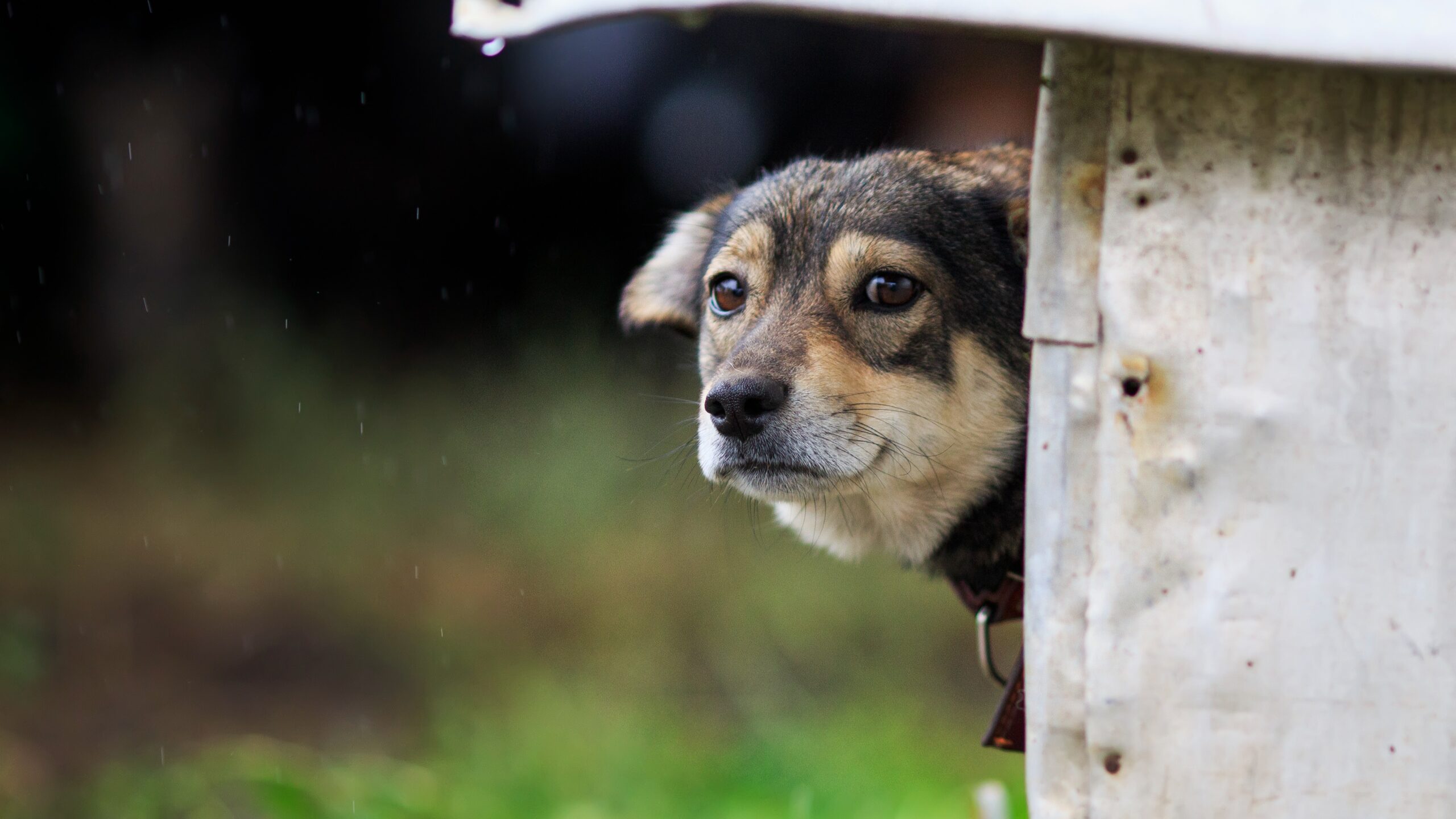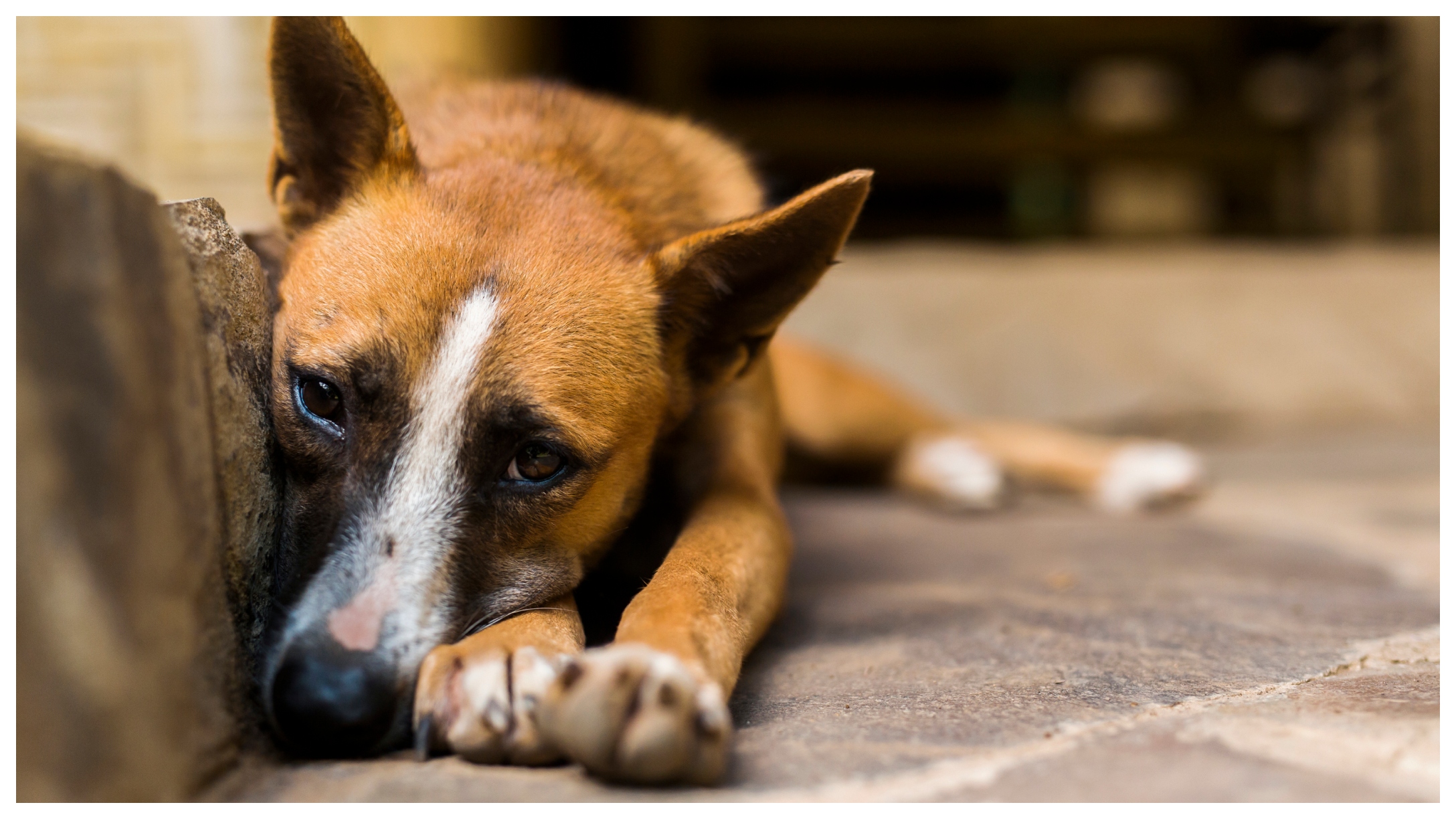
We’ve seen all too recently the impact that natural disasters can have on pets. With hurricane season now in effect through November, it’s especially important for pet parents to have a plan on how to keep their animals safe during storms. LittleThings spoke with the Rev. Kaleel Sakakeeny, an animal chaplain and founder of the nonprofit organization Animal Talks, for tips.
“Hurricane Katrina was a horrific tragedy,” says Rev. Sakakeeny. “More than 70,000 pets died and all of us were devastated. Since then, and because of the tragedy, the federal government enacted the PETS act — Pet Evacuation and Transportation Standards Act — which says county and governments must create evacuation plans that account for the needs of household pets and service animals.”
Reverend Sakakeeny sums up the details:

- “Pet parents forced to evacuate their homes need to take their pets with them, and the law provides for emergency shelters for pets with the government reimbursing municipalities for keeping the shelters safe, clean, and hospitable.”
- "Pet parents need to find out where their pet shelters are and what they need to bring with them, like your pet’s licenses, proof of vaccination, pet food, and crate, if you’re using one. Please prep this well in advance of a storm.”
- “If no pet shelter exists, them please make arrangements beforehand with a friend or relative or boarding facility where you can take your pet so he/she can ride out the storm in safety.”
- “Some hotels and veterinarian centers will accept pets in emergency situations like these. Please check ahead of time.”
- “Above all, do not evacuate without your pet.”
As a storm approaches, Rev. Sakakeeny notes, “There is no absolute safe place given the ferocity of tornadoes, hurricanes, typhoons, and massive flooding. However, all things being equal — which they never are — ‘the safest place’ is usually the first floor. Higher up is vulnerable to wind and lower down to flooding. Most homes in areas affected by hurricanes don’t have basements anyway, but even if yours does, it is inadvisable to shelter there.”
Once in a safe spot, he advises, “Staying with your pet during the calamity is essential. Speaking in soft comforting tones and sitting next to them or holding them is important. Having a favorite toy with you and food and water are critical. Always be sure your pet has an identification tag and has been microchipped in case you and your pet are separated. And please have a plan worked out and shared with family members well in advance of any disaster.”
Pets may experience anxiety or distress. “If your pet has a crate, it’s best to put him or her in it,” says Rev. Sakakeeny. “Some people suggest anxiety vests or thunder shirts. The thinking is that the wraps around the pet’s torso give them a feeling of security and reassurance. There are anxiety vests for cats too, but that’s not such a simple process. Cats being cats.”
Rev. Sakakeeny also points to calming pills, drops, and sprays, but urges pet parents to talk to their vet before administering any supplement. He adds, “The best antidote to a pet’s anxiety is to try to remain as calm as possible. And keep to your usual routine as much as you can.”
Additionally Rev. Sakakeeny says, “Keep pet toys, food, water, music easily available. If your pet has a favorite corner or couch, sit with him/her and speak in reassuring tones.
Meantime, keep an eye on what you have to do. And of course, listen to emergency broadcasts. If the power is out, then turn off the gas, etc. Be sure you have all your pet’s IDs, like vaccination proofs, tags, and an escape plan.”
If you live in an area where flooding is a risk, you may consider getting a life vest for your pet. “Chewy makes a series of dog life vests,” says Rev. Sakakeeny. “Cats? Not so much. Not a bad idea, but, you know your dog and whether a life vest will up the anxiety or not.”
When putting together an emergency preparedness kit for your pet, Rev. Sakakeeny points to Pet MD suggestions:
- Five to seven days’ worth of nonperishable pet food in sealed containers.
- At least seven days’ worth of water for each pet.
- Photocopies copies of each pet’s medical records (including vaccinations), or copies saved online or in your phone.
- A waterproof container with a two-week supply of any prescription medications your pet is on — including heartworm medication. Be sure to fill these prescriptions well in advance.
- Recent photos of your pets — either printed or saved on your phone in case you are separated and need to make “lost pet” posters.
- Pet food dishes and water bowls. Litter box and litter.
- Collars or harnesses to attach ID tags with your information, and leashes to keep dogs safely by your side.
- Comfort items for your pet, including blankets, beds, treats, and toys.
- Pet calming aids like supplements or anxiety vests that can help to reduce anxiety during an emergency situation. Check with your vet because side effects can be alarming.
- Pet emergency sticker, placed outside each door that tells rescue teams that animals may be trapped inside, and how many to look for in case you evacuated in a hurry. But please do not leave your pet.
- Phone numbers of three veterinarians that are outside evacuation zones.
In addition, Rev. Sakakeeny suggests “a pet first-aid kit: basics like bandages, disinfectant wipes, scissors, lots of treats, maybe eye wash, some say a tweezer to remove splinters or shards.”
While we treat our dogs like babies, Rev. Sakakeeny doesn’t advise you wear your small dog in a baby carrier to keep them close. “I personally think it’s unwise. Panic or fear could cause the pet to struggle to free himself causing serious harm to human and animal, especially in crisis situations.”
If you’re safe at home but have lost power or air conditioning, that brings a new set of challenges. “Heat is a huge issue for pets and people,” says Rev. Sakakeeny. “With pets having all that fur and hair, it can quickly turn dangerous. Always keep cool water available. Add ice cubes to the water for play and to keep the water cool. I suggest a cooling wrap, a towel or soft cloth bathed in cool water and applied to your dog (cats, maybe) frequently. If there is no power, then there is no AC or fan. If there is power, then maybe there is a fan or better, AC."
He adds: "Dogs sweat from their paws and get rid of excess fluid by panting. They need cool water changed frequently, with some ice shavings or cubes, and a cooling cloth.”




